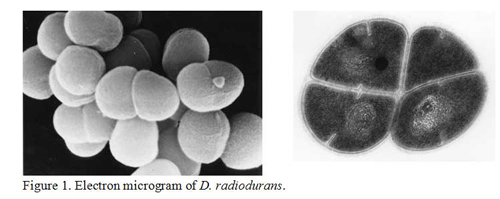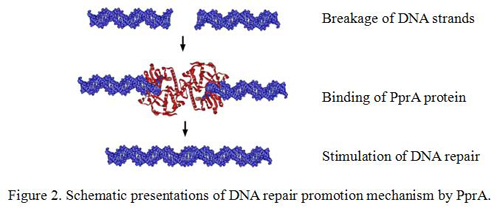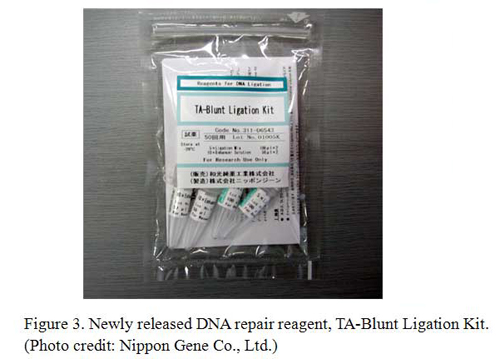1. Outlines and History
Deinococcus radiodurans (figure 1) is a non-pathogenic bacterium
that habitats various earth's environment. The most striking feature
of D. radiodurans is its extremely radioresistance phenotype.
They show the most resistance to ionizing radiation among all
the living organisms: 100-fold and more than 1,000-fold resistant
compared to Escherichia coli and human cell, respectively. Previous
studies revealed that D. radiodurans possesses high capacity for
repairing ionizing radiation-induced DNA damage. However, the
mechanisms underlying its radioresistance had yet to be determined.
In 1999, The Institute for Genomic Research, USA, determined the
genome sequence of D. radiodurans. The genome analysis, however,
could not clarify the radioresistance mechanisms.

JAEA investigated D. radiodurans using gamma irradiation facility
and ion beam irradiation facility (TIARA) located in Takasaki
Advanced Radiation Research Institute in order to clarify what
gene is important in radioresistance. In consequence, we found
out a gene named pprA and applied for a patent in 2001. Protein
PprA derived from the pprA gene had no similarity to any other
hitherto known proteins. Subsequent biochemical studies revealed
that PprA protein preferentially bound to ionizing radiation-induced
DNA strand breaks, and thereby stimulated DNA repair (Figure 2).

2. Achievement of the practical use
The repair of DNA strand breaks is used in fundamental genetic
engineering technique such as DNA cloning. Therefore, we considered
that PprA protein could be useful as a new biotech reagent. Nippon
Gene Co., Ltd., Toyama, who licensed from JAEA, released a new
DNA repair reagent “TA-Blunt Ligation Kit” (figure
3) which used the PprA technology, November 18, 2005. Prior to
the achievement of the practical use, JAEA advanced a proposal
on the practical application of the PprA technology, actively
engaged in providing samples and giving technical guidance to
Nippon Gene through the technology transfer support program of
Japan Science and Technology Agency.
Hereafter, broad-ranging utilization of the DNA repair kit is
expected in genetic engineering field including genetic diagnosis
and the development of new medications.







